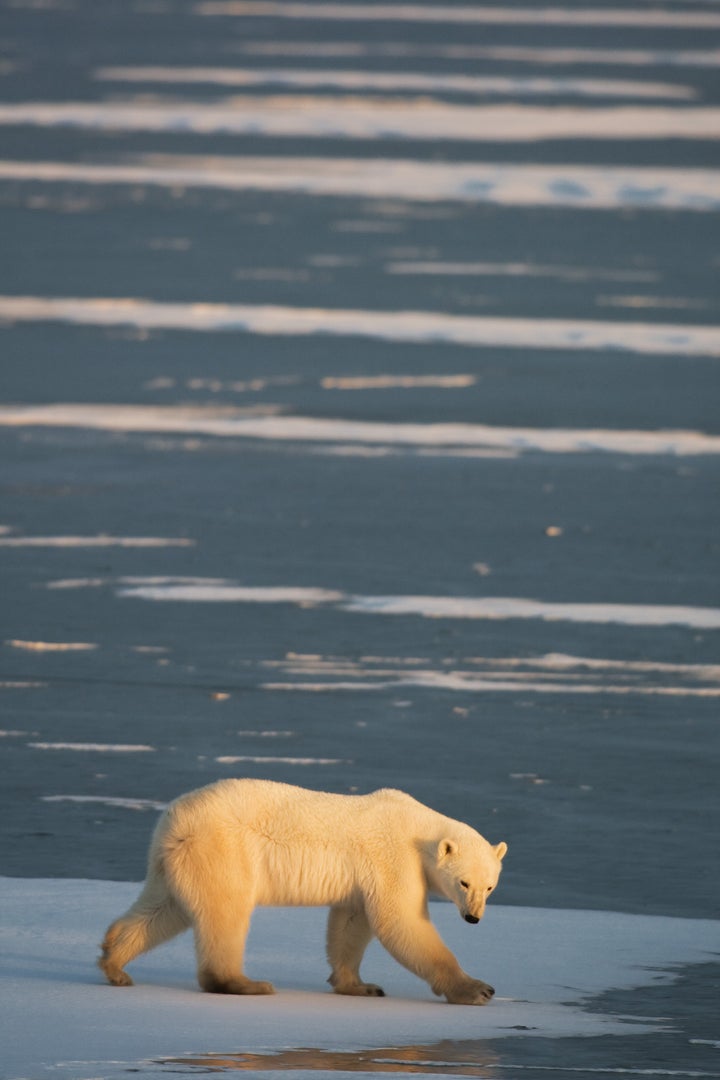
To the Arctic, like the cable series Frozen Planet and other films of the type, provides a precious historical record.
At some point in the future, as man-made climate change raises global temperatures and causes the polar ice caps to melt even faster, we will no longer have species like the ones filmed with such care by the team of Greg and Sean MacGillvray. At some point in the future, films such as To the Arctic will provide the only visual record of polar bears, caribou and other Arctic fauna that will eventually disappear.
To the Arctic makes the point emphatically, following a mother polar bear in her increasingly difficult search for food for her and her twin cubs. The science is simple: The Arctic ice is thawing at an unexpectedly fast rate -- but the bears need the ice to hunt seals to survive. Otherwise, males will hunt polar bear cubs, a fact shown to harrowing effect in this film.
The IMAX image is in 3D, providing a dazzlingly immersive experience. The camera's proximity to the polar bear family, to caribou, to a family of walruses -- it's startling, as is the filmmakers' willingness to plunge into water so cold it can stop your heart in a matter of minutes to shoot beneath the ice cap.
The narration, by Meryl Streep, weaves together what amount to miniature looks into the ways the diminishing ice pack affects the variety of wildlife hearty enough to survive in subzero temperatures (but not in warmer climes).
It's a more impressionist look than a thorough-going one -- yet each segment is meant to remind that you're seeing animals struggling to adapt, to survive as the climate changes around them. It's not meant to be authoritative; still, the blend of riveting visuals and stories of each species' shrinking habitat carries an impact.
At 45 minutes, To the Arctic hopefully will be shown to kids in schools, on field trips to their local IMAX theater. It's a way of lighting the fuse of consciousness about looming environmental catastrophe, while offering a captivating film at the same time.
Find more reviews, interviews and commentary on my website.
